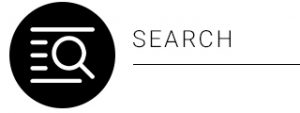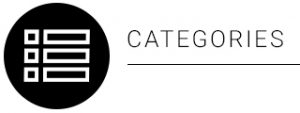USE MATHEMATICS TO INVESTIGATE AND MONITOR THE FINANCIAL ASPECTS OF PERSONAL, BUSINESS AND NATIONAL ISSUES
US 7456
NQF LEVEL: 3
CREDITS: 5
NOTIONAL HOURS: 50
SAQA UNIT STANDARD ALIGNMENT
SPECIFIC OUTCOMES (SO)
UNIT STANDARD 7456 :
Use mathematics to investigate and monitor the financial aspects of personal, business and national issues.
SPECIFIC OUTCOME 1
On completion of this section you will be able to use mathematics to investigate and monitor the financial aspects of personal, business and national issues.
On completion of this section you will be able to use mathematics to plan and control personal, regional and/or national budgets and income and expenditure. (SO 1, AC 1)
Assessment criterion notes
Plans describe projected income and expenditure realistically.
Calculations are carried out using computational tools efficiently and correctly and solutions obtained are verified in terms of the context.
Budgets are presented in a manner that makes for easy monitoring and control.
Actual income and expenditure is recorded accurately and in relation to planned income and expenditure. Variances are identified and explained and methods are provided for control.
SPECIFIC OUTCOME 2
On completion of this section you will be able to Use simple and compound interest to make sense of and define a variety of situations. E.g. mortgage loans, hire purchase, present values, annuities and sinking funds
On completion of this section you will be able to:
The differences between simple and compound interest are described in terms of their common applications and effects. (S0 2, AC 1)
Methods of calculation are appropriate to the problem types. (SO 2, AC 2)
Computational tools are used efficiently and correctly and solutions obtained are verified in terms of the context or problem. (SO 2, AC 3)
Solutions to calculations are used effectively to define the changes over a period of time. (SO 2, AC 4)
SPECIFIC OUTCOME 3
On completion of this section you will be able to Use mathematics to debate aspects of the national and global economy. E.g. exchange rates, imports, exports, and comparative effectiveness of currency in relation to remuneration, monetary policy and the control of inflation
On completion of this section you will be able to use mathematics to debate aspects of the national economy.
ASSESSMENT CRITERION NOTES
Values are calculated correctly.
Mathematical tools and systems are used effectively to determine, compare and describe aspects of the national economy.
Debating points are based on well-reasoned arguments and are supported by mathematical information.
Table of Contents
HOW TO USE THIS GUIDE
ICONS
TAKE NOTE
PROGRAMME OVERVIEW
LEARNING ASSUMPTIONS
HOW YOU WILL LEARN
HOW YOU WILL BE ASSESSED
TABLES
SECTION 1: USING MATHEMATICS TO PLAN AND CONTROL BUDGETS AND INCOME AND EXPENDITURE
BUDGETS
COMPANY BUDGETS
THE BUDGETING PROCESS
INCOME AND EXPENDITURE
SURVEYS
MEAN, MEDIAN, MODE, AND RANGE
SIMPLE RANDOM SAMPLING
RANDOM NUMBERS FROM A CALCULATOR OR SPREADSHEET
RANDOM NUMBER TABLES
SECTION 2: USE SIMPLE AND COMPOUND INTEREST TO MAKE SENSE OF AND DEFINE A VARIETY OF SITUATIONS
INTEREST RATES
THEORETICAL PROBABILITY
SECTION 3: USE MATHEMATICS TO DEBATE ASPECTS OF THE NATIONAL ECONOMY
PRODUCTIVITY
IMPACT OF HIV/AIDS
TAX
DEFINING TAX TERMINOLOGY
DISTRIBUTION OF WEALTH
EXCHANGE RATE
HOW TO USE THIS GUIDE
This workbook belongs to you. It is designed to serve as a guide for the duration of your training programme and as a resource for after the time. It contains readings, activities, and application aids that will assist you in developing the knowledge and skills stipulated in the specific outcomes and assessment criteria. Follow along in the guide as the facilitator takes you through the material, and feel free to make notes and diagrams that will help you to clarify or retain information. Jot down things that work well or ideas that come from the group. Also, note any points you would like to explore further. Participate actively in the skill practice activities, as they will give you an opportunity to gain insights from other people’s experiences and to practice the skills. Do not forget to share your own experiences so that others can learn from you too.
ICONS
For ease of reference, an icon will indicate different activities. The following icons indicate different activities in the manual.
PROGRAMME OVERVIEW
PURPOSE
At the end of this training session you will be able to:
Use mathematics to plan and control financial instruments including insurance and assurance, unit trusts, stock exchange dealings, options, futures and bonds
Use simple and compound interest to make sense of and define a variety of situations including mortgage loans, hire purchase, present values, annuities and sinking funds
Investigate various aspects of costs and revenue including marginal costs, marginal revenue and optimisation of profit
Use mathematics to debate aspects of the national and global economy, including tax, productivity and the equitable distribution of resources.
LEARNING ASSUMPTIONS
The credit value is based on the assumption that people starting to learn towards this unit standard are competent in Mathematics and Communications at NQF level 3.
HOW YOU WILL LEARN
The programme methodology includes facilitator presentations, readings, individual activities, group discussions, and skill application exercises.
HOW YOU WILL BE ASSESSED
This programme has been aligned to registered unit standards. You will be assessed against the outcomes of the unit standards by completing a knowledge assignment that covers the essential embedded knowledge stipulated in the unit standards, and by doing a practical assessment to apply the learning to your work situation. When you are assessed as competent against the unit standards, you will receive a certificate of competence and be awarded 6 credits towards a National Qualification.

Download and print the tables to keep them near while doing this course.






